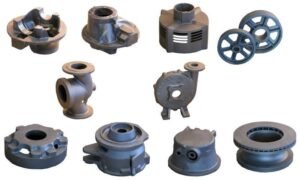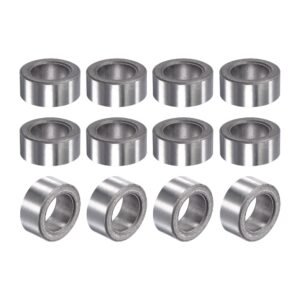Sintered iron and cast iron are both materials based on iron elements, but their manufacturing processes and characteristics differ.

Manufacturing rocess

Sintered iron is produced through a high-temperature sintering process. In this process, iron powder is heated at high temperatures, causing partial melting between particles. Usually, before reaching a fully melted state, iron powder particles begin to combine with each other, forming a solid whole.
Cast iron is produced through the casting process. The production process of cast iron involves melting a mixture of iron and other elements (such as carbon) at high temperatures, then pouring it into a mold to cool and solidify, forming the desired shape and size. Compared with sintered iron, cast iron has lower hardness and wear resistance, but its advantages lie in its good flowability and casting performance.
Physical Property
The physical properties of sintered iron can be adjusted to a certain extent by changing the sintering process parameters. For example, the hardness, strength, wear resistance, toughness, and other properties of the product can be controlled by changing the sintering temperature, time, and selecting different additives.
Cast iron has high hardness and strong wear resistance, but poor toughness and is prone to fragmentation. Moreover, the shape of cast iron can only be changed through casting, and cannot be forged or welded.
Application
 Sintered iron has high strength, wear and corrosion resistance, and good heat treatment properties. It is usually used in applications that require heavy pressure and high temperatures, and is more suitable for manufacturing small and medium-sized components that require high precision and complex shapes, such as bearings, gears, etc.
Sintered iron has high strength, wear and corrosion resistance, and good heat treatment properties. It is usually used in applications that require heavy pressure and high temperatures, and is more suitable for manufacturing small and medium-sized components that require high precision and complex shapes, such as bearings, gears, etc.
Cast iron is commonly used for manufacturing large structural components, building materials, industrial equipment, household cookware, and many other fields due to its good castability and high economy. For example, machine tool beds, car engine hoods, etc. do not require high-precision, simple shaped components.
Overall, sintered iron and cast iron each have unique advantages, and the choice of material depends on the specific usage environment and needs.
Thank you for reading our article. If you need related products or have any questions or suggestions about our products, please don't hesitate to contact us by sending an email, and we will reply to your email as soon as possible.




